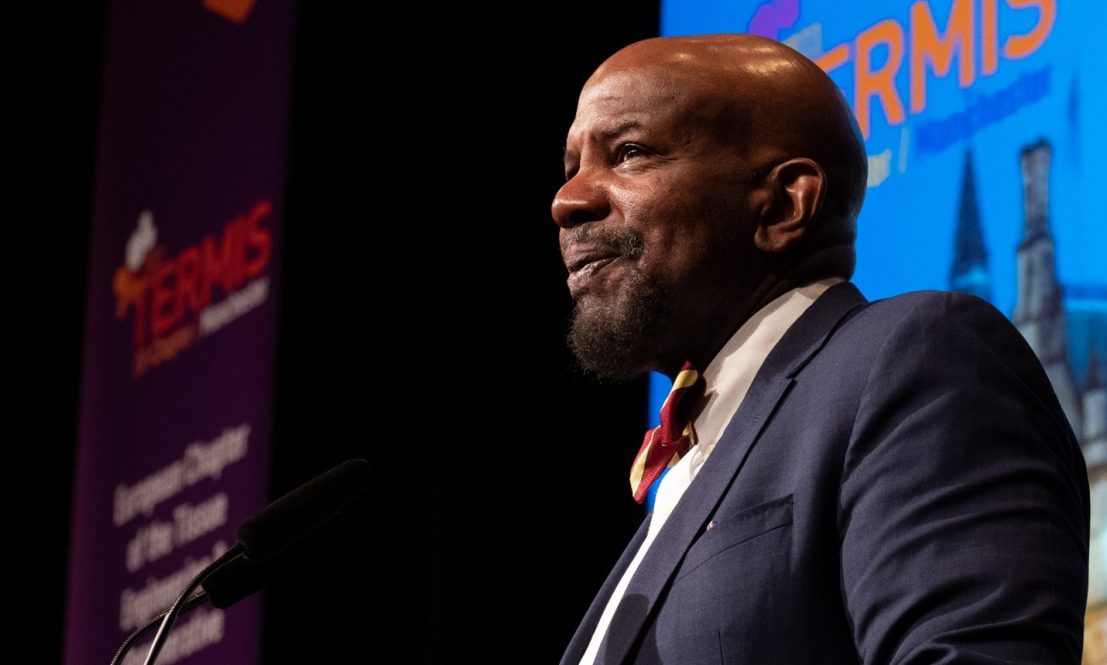Dr. Cato T. Laurencin leads team researching a gap in regenerative engineering that could be solved with material collected from pig skeletal muscle

Dr. Cato T. Laurencin
Dr. Cato T. Laurencin and a team of researchers have made a potential breakthrough in understanding how porcine hydrogels can be applied for muscle and tissue regeneration.
Laurencin, the Albert and Wilda Van Dusen Distinguished Endowed Professor for Orthopaedic Surgery, is a pioneer in the field of regenerative engineering. He led the team that published its findings on hydrogels in the April issue of the Proceedings of the National Academy of Sciences (PNAS), the peer-reviewed journal of the National Academy of Sciences.
Regenerative engineering is the convergence of advanced materials sciences, stem cell science, physics, developmental biology, and clinical translation for complex regeneration of tissue and organs. The team's article and corresponding research address a gap in regenerative medicine that is potentially bridged by hydrogels of DNA derived from animals.
"This new potential in hydrogels could be the link to bring us closer to our goal of regenerating a limb," says Laurencin.
The research team included members of UConn Health's Cato T. Laurencin Institute for Regenerative Engineering Takayoshi Otsuka, Debolina Ghosh, and Eva Ho-Man Kan. Dr. Mohammed A. Barajaa of Imam Abdulrahman Bin Faisal University in Saudi Arabia led the experiments and co-authored the article.
Dr. Mohammed Barajaa is a highly accomplished biomedical engineer and the first Saudi regenerative engineer. He holds a Ph.D. in biomedical engineering and has made significant contributions to stem cell research and the development of living tissues and organs. An assistant professor at Imam Abdulrahman Bin Faisal University, he is also working on ECM-derived hydrogels from bovine, camels, and humans, coupled with 3D bioprinting technology for various regenerative engineering applications. He continues to push the boundaries of regenerative engineering, aiming to revolutionize the field and improve lives.
Barajaa earned his master's degree under the mentorship of Laurencin. His Ph.D. research, also under Laurencin, involved advanced techniques like 3D printing, 3D bioprinting, and electrospinning, leading to innovations in tissue and organ development. His expertise includes designing and conducting in vitro and in vivo regenerative engineering research, planning and executing preclinical studies, and providing comprehensive surgical care. Barajaa has published numerous research papers and presented his work at national and international conferences.
To derive hydrogels, the team used skeletal muscle from pigs for decellularized extracellular matrices (ECMS). Scientists including Barajaa and Otsuka used mechanical disruption and applied detergents to the ECM. According to the article, the remaining tissue was treated with enzymes to mitigate immunogenicity, or cell rejection.
The researchers discovered that their methods efficiently remove cell and xenoantigens from the hydrogels, preserving biochemicals that promote compatibility and reduce immunogenicity.
Ghosh says the hydrogels are versatile and applicable in regeneration of muscle, such as from patients recovering from injury that resulted in the loss of significant muscle mass. The experiment was part of series of generating to understand the potential of hydrogels and how their production can be scaled up for wider distribution.
"It is always a triumph when you get to the point when something can be scaled to a human level, with the ability to positively impact a community," Ghosh says.
The article's publication continues a successful year for Laurencin. On May 5, he was inducted into the Plastics Hall of Fame in recognition of his work in regenerative engineering and use of polymeric materials in applications that have helped a large number of people.






